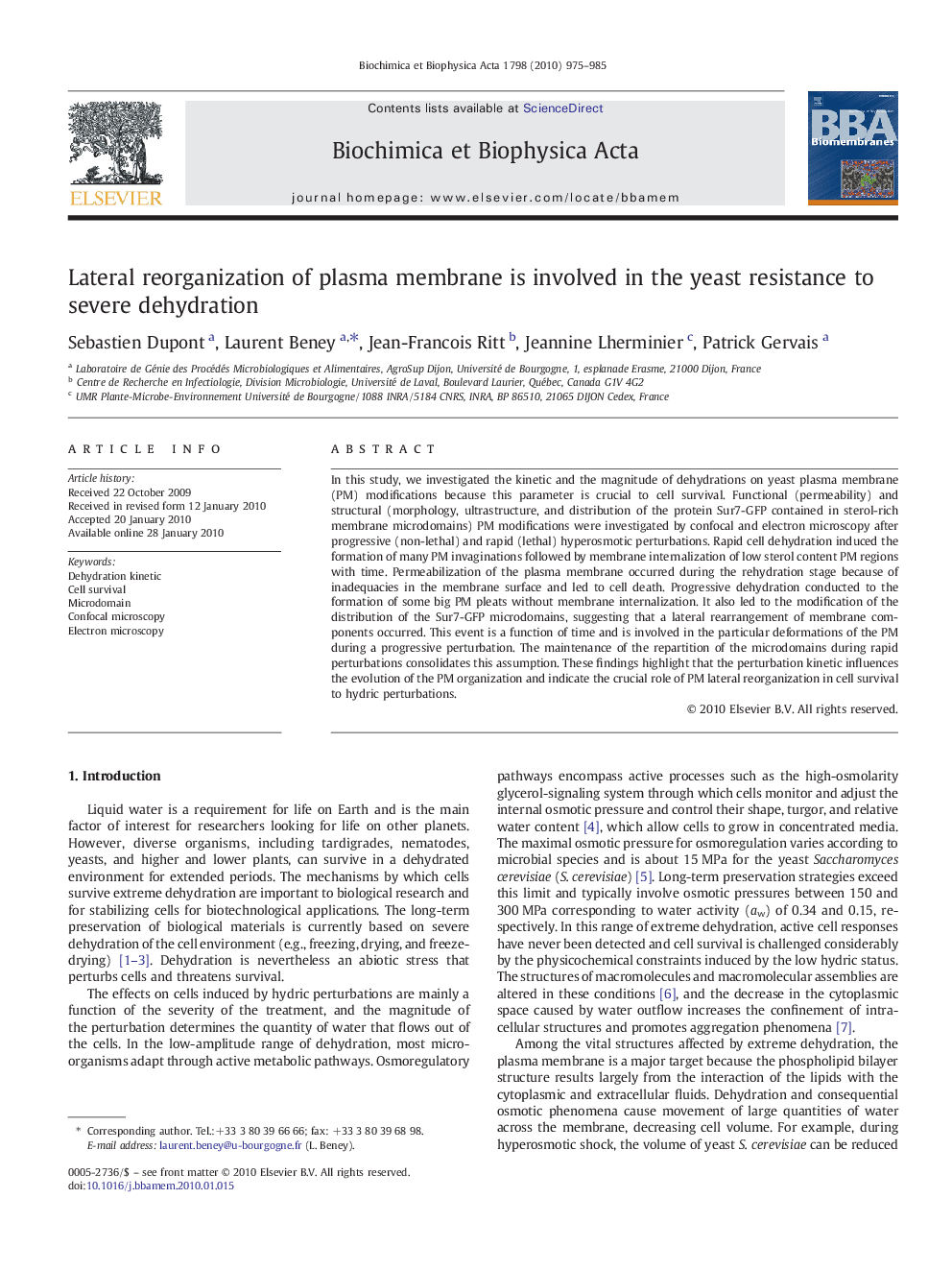| Article ID | Journal | Published Year | Pages | File Type |
|---|---|---|---|---|
| 1944904 | Biochimica et Biophysica Acta (BBA) - Biomembranes | 2010 | 11 Pages |
In this study, we investigated the kinetic and the magnitude of dehydrations on yeast plasma membrane (PM) modifications because this parameter is crucial to cell survival. Functional (permeability) and structural (morphology, ultrastructure, and distribution of the protein Sur7-GFP contained in sterol-rich membrane microdomains) PM modifications were investigated by confocal and electron microscopy after progressive (non-lethal) and rapid (lethal) hyperosmotic perturbations. Rapid cell dehydration induced the formation of many PM invaginations followed by membrane internalization of low sterol content PM regions with time. Permeabilization of the plasma membrane occurred during the rehydration stage because of inadequacies in the membrane surface and led to cell death. Progressive dehydration conducted to the formation of some big PM pleats without membrane internalization. It also led to the modification of the distribution of the Sur7-GFP microdomains, suggesting that a lateral rearrangement of membrane components occurred. This event is a function of time and is involved in the particular deformations of the PM during a progressive perturbation. The maintenance of the repartition of the microdomains during rapid perturbations consolidates this assumption. These findings highlight that the perturbation kinetic influences the evolution of the PM organization and indicate the crucial role of PM lateral reorganization in cell survival to hydric perturbations.
